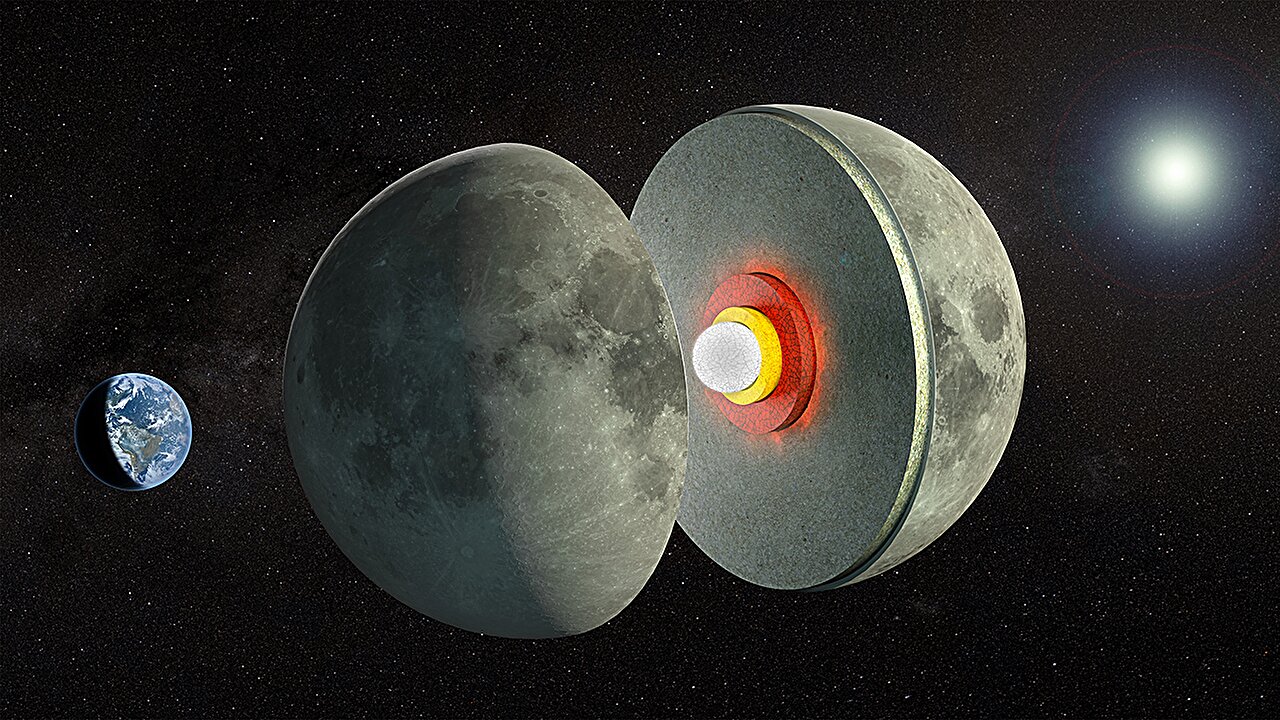Scientists say that despite current ideas that geologic processes on the Moon are complete near its core, there is still a thin layer of molten magma. They reached this conclusion by observing the effect of Earth’s tidal forces on our moon.

Evidence for the existence of a molten layer
We know that beneath the crater-pocked silicate crust, the Moon has a solid olivine mantle and a metallic core. However, some other studies also suggest that a partially molten layer may be at the base of the solid mantle, trapped between it and the solid core. But other evidence contradicts this.
Now Sander Goossens and his colleagues present new measurements in AGU Advances that confirm the existence of this somewhat molten transition zone, which could have key consequences for our understanding of the Moon’s structure, origin, and evolution.
The new evidence comes from analyzing the tides on the moon. Similar to the way the gravitational pull of the Moon and Sun periodically distorts the shape and gravitational field of the Earth, causing the oceans to rise and fall, the Earth and Sun pull on our moon, causing tidal effects that distort the Moon’s shape and gravity.
The Moon’s response to tidal forces depends in part on its deep internal structure, so researchers can study this response to get clues about the lunar interior.
Model of the lunar interior
Previous studies have already analyzed changes in the Moon’s gravity in response to tides over the course of a month. In the paper, the researchers first captured the annual changes by analyzing data from NASA’s Gravity Recovery and Interior Laboratory (GRAIL) and the Lunar Reconnaissance Orbiter.
Next, they included monthly and annual changes in lunar gravity along with other information such as the average density of the Moon, a model that simulates the nature of the lunar depths. They found that without including a softer layer at the base of the mantle, the model cannot reproduce the observed gravitational measurements. In other words, this study indicates a high probability of the existence of a partially molten layer of deep mantle.
The researchers suggest that if it exists, the partially molten layer may consist of a titanium-rich material called ilmenite. However, we need more research to better understand this layer and to determine the source of the heat that sustained the melt for probably billions of years.
According to phys.org


